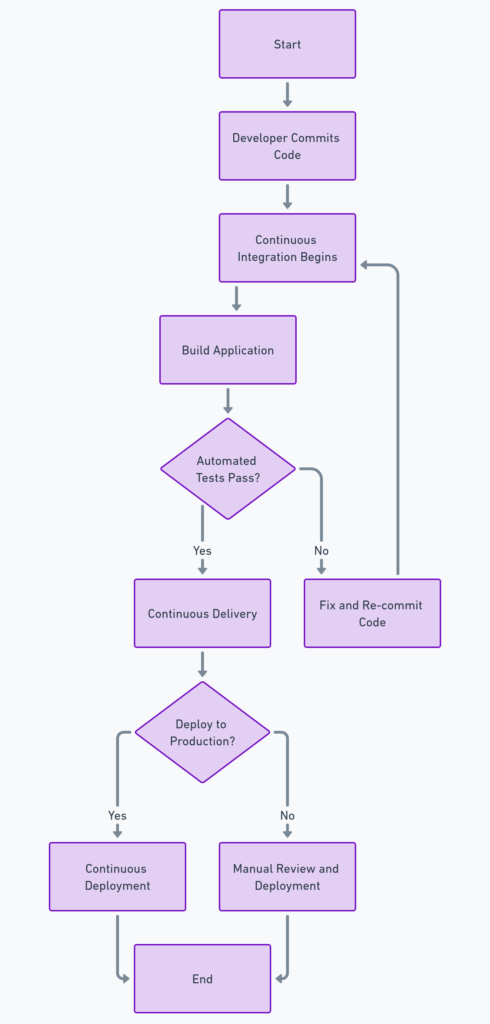Maximize Efficiency with Continuous Integration and Continuous Delivery (CI/CD)
In today’s fast-paced software development world, Continuous Integration and Continuous Delivery (CI/CD) play crucial roles. They streamline the journey from development to deployment. Consequently, by embracing CI/CD, organizations can meet market demands swiftly and efficiently.

What CI/CD Brings to the Table
CI/CD uniquely combines code integration with automated delivery. This approach not only catches issues early but also automates tests and accelerates releases. Therefore, it’s essential for maintaining a competitive edge in software development.
The Advantages of CI/CD
CI/CD significantly boosts team collaboration and enhances project transparency. It supports rapid iterations, allowing teams to adapt quickly. As a result, this leads to faster releases and a marked improvement in product quality.
Implementing CI/CD
For successful CI/CD implementation, choosing the right tools is crucial. Jenkins, GitLab CI, and CircleCI automate and optimize CI/CD pipelines. Similarly, fostering a culture of continuous improvement is equally important.
CI/CD and Agile: A Perfect Match
CI/CD complements Agile practices by ensuring that development is always ready for release. This perfect alignment further enhances product reliability and customer satisfaction.
Overcoming CI/CD Challenges
While adopting CI/CD presents challenges, including complex dependencies and resistance to change, overcoming these hurdles is possible. Specifically, clear planning and effective communication can pave the way for success.
The Future of CI/CD
Looking ahead, advances in AI, containerization, and cloud computing will undoubtedly influence CI/CD. These technologies promise to make pipelines even more efficient and effective.
CI/CD Drives Development Success
In summary, CI/CD is indispensable for modern software teams. It ensures efficiency, quality, and speed in development. Ultimately, adopting CI/CD represents a strategic move toward excellence.